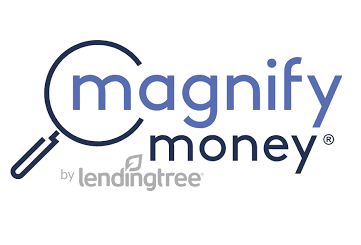If you’re planning to buy your first home, saving up for all the costs involved can feel…

Steps for Getting the Best Home Equity Loan Rate
Article from Magnify Money with contributions from Vantage president Andy Harris.
Buying a home is a major investment, but homeownership has its privileges. With home values having risen more than 7% in the last year, according to real estate marketplace Zillow, many homeowners are finding themselves with a growing amount of equity at their disposal.The average homeowner with at least 20% equity had $136,000 in equity at the end of September 2018, according to data analytics and solutions provider Black Knight. That’s good news if you want to borrow against your equity to make home improvements, pay off debts, finance a child’s education or fund other pressing financial needs.
However, interest rates have been rising. If they continue to do so, the costs of borrowing against your equity may increase in the coming months. As a result, some homeowners may feel like the time to tap their equity is now.
There are three basic ways to access the equity in your house: You can take out a home equity loan, open a home equity line of credit, or HELOC, or initiate a cash-out refinance. Here’s how to figure out which is right for you and how to make sure you get the best rate.
Current home equity loan rates: What to expect
If you’re thinking about taking out a home equity loan, it’s a good idea to do some research about the current landscape. At the end of 2018, the average home equity loan rates were about 5.52% and the average HELOCs were approximately 6.05%, according to Black Knight’s loan-level mortgage performance database.
Credit and equity requirements
Lenders consider a number of factors when determining whether you can borrow against your equity and what rate you may be eligible for. Among them:
-
- Your income. Lenders want to see whether you have enough money to pay back the loan.
- Your credit score. The higher your score, the better the rate you’ll likely get. Different lenders have different requirements. For example, Discover requires a minimum credit score of 620.
- Your debt-to-income ratio. Lenders want to see how much money you spend in debt payments compared to the amount of income you make. Many lenders want to make sure you’re not spending more than 43% of your pre-tax income on debt.
- The amount of equity in your home. A lender won’t let you borrow all of your equity. Rather, they’ll calculate what’s known as your combined loan-to-value (CLTV) ratio to determine how much you can borrow.
To come up with your CLTV ratio, add the amount you currently owe on your mortgage to the amount you want to borrow and then divide that by the total value of the house. For example, if you owe $80,000 on your home and you want to borrow $20,000 and the house is worth $150,000, your CLTV ratio would be $100,000 divided by $150,000, or approximately 66%.
Many lenders, such as Wells Fargo and Bank of America, will let you borrow up to 85% of your CLTV, though some may let you borrow more. For example, Discover will in some cases let you borrow up to 95% CLTV.
Risks and rewards of home equity loans and HELOCs
Borrowing against the equity in your house is not a decision to take lightly. There are pros and cons. Among the reasons you might want to tap your equity:
You may get lower interest rates. You may find that you get a better interest rate taking out a home equity loan than you would if you borrowed money in other ways, such as by taking out a personal loan or turning to credit cards.
You may get a (limited) tax break. Until recently, one of the biggest benefits of home equity loans and HELOCs was that interest was deductible, unlike with other types of loans.
However, the Tax Cuts and Jobs Act of 2017, which went into effect last year, limited the tax benefits somewhat. Today, interest from home equity loans and HELOCs is only deductible if the loans are used for home improvements, according to the IRS. If you’ve been thinking about renovating the kitchen or adding another room, a home equity loan could make sense.
However, it’s also important to recognize that home equity loans come with some risk.
You could lose your house. When you borrow against your equity, you’re essentially putting your house at risk. If you have trouble making payments on your home equity loan or HELOC, your house could be foreclosed upon.
There are costs associated with the loan. Not only will you have to pay interest on the money you borrow, but you may be charged upfront fees or closing costs.
You may just be moving around debt. Be particularly cautious if you’re thinking about using your equity to pay off other debt such as high-interest credit cards. While you may get a lower rate by taking out a home equity loan, you’re basically replacing one debt for another.
Choosing the right type of loan
Once you decide that you want to borrow from your equity, “the most important thing is shopping, comparing and looking at the different options,” said Andy Harris, president of Vantage Mortgage Group, based in Lake Oswego, Ore. Here’s how the three options compare.
Home equity loan. A home equity loan is a lump sum loan that you make payments on for the life of the term. You’ll typically pay a fixed rate, which means it won’t change for the life of the loan. You may also have to pay certain fees when you take out the loan.
Home equity loans may be best for you if you need a set amount for a one-time specific financial goal, such as a major home improvement or a medical crisis.
Home equity line of credit. A HELOC is a line of credit that you can borrow from as you need, making payments only on what you borrow. You can take out money and make minimum payments on the interest only during what’s known as the “draw period.”
Once that period ends, you’ll no longer be able to withdraw money and your minimum payments may become larger or the entire balance may become due. It’s also important to know that HELOCs typically have adjustable interest rates, meaning the rate you pay can fluctuate over time and your payments may vary from month to month.
A HELOC may be best if you want to borrow money that you think you can pay back quickly, Harris said. It’s also more flexible than a home equity loan, since you’re only borrowing money as you need rather than being stuck paying back an entire lump sum. Since you only pay interest on the amount you actually use, a HELOC might be ideal if you simply need extra cash to tide you over for a set period of time.
Cash-out refinance. Another way to access your equity is a cash-out refinance. This is when you take out a new mortgage loan that’s larger than your current one. As a result, you end up with enough to pay off the existing mortgage and borrow some of your equity from the home in the process. For example, if you owe $120,000 on your house and your house is worth $270,000, you might refinance to a $160,000 mortgage and borrow $40,000 in cash.
A cash-out refinance may be best if you can get an interest rate on the new mortgage that’s lower than the rate you currently have on your first mortgage. To determine whether a cash-out refinance makes more sense than taking out a home equity loan, consider the terms of the deal and the total amount of payments and interest over the life of the loan, Harris said.
If you refinance to another 30-year mortgage, keep in mind that you’ll be extending the amount of time it takes to pay off your mortgage and you may be paying more in interest over the life of the loan. You’ll also have less equity in your home if you take the cash out, so if you plan to sell your house soon, you may not get as much for it.
Conclusion
If your home has built up a significant amount of equity, you may be able to leverage that equity to meet other financial goals. However, take the time to shop around to make sure you choose the option that will not only help you financially today, but that will benefit you years down the road.



